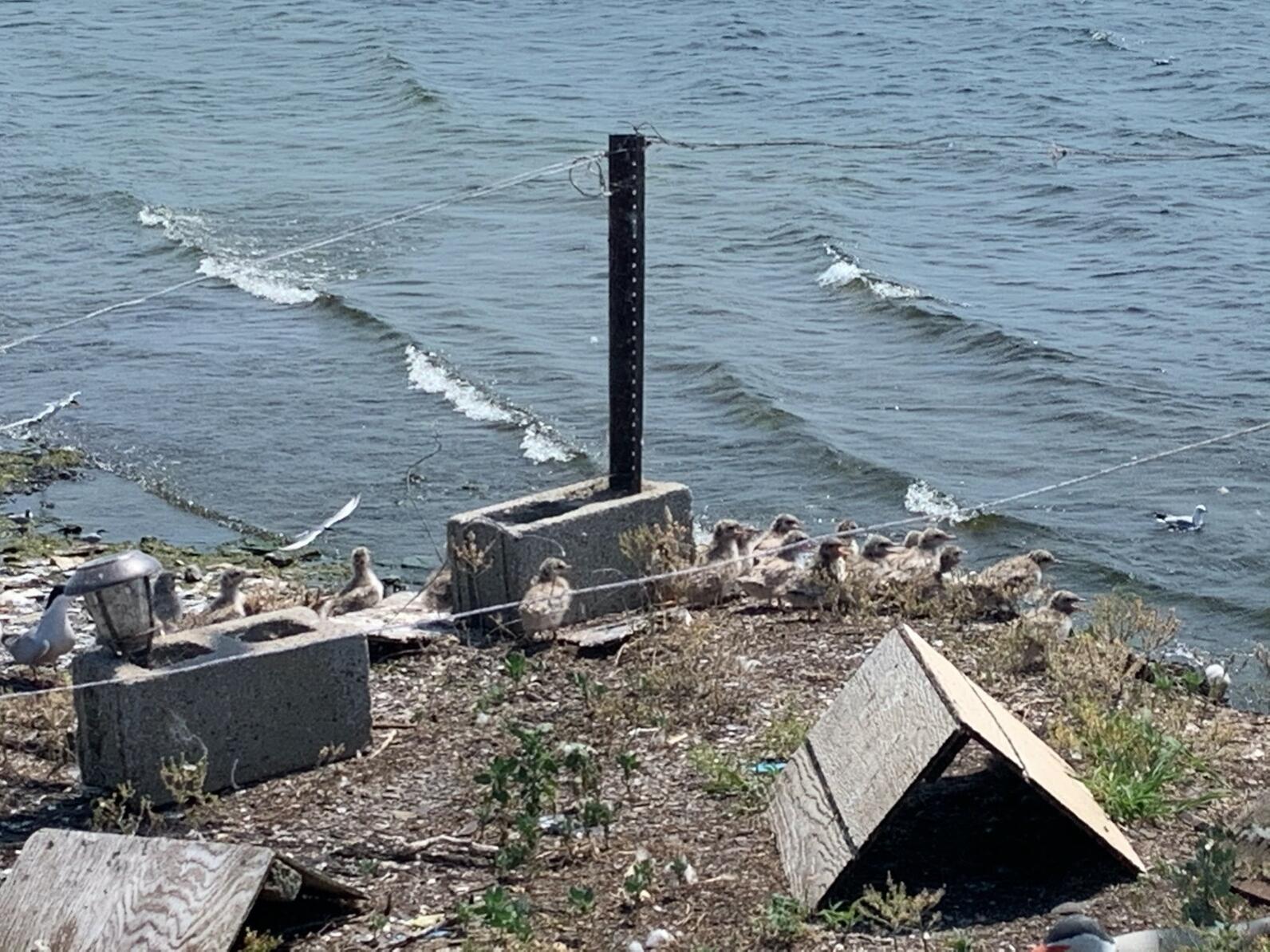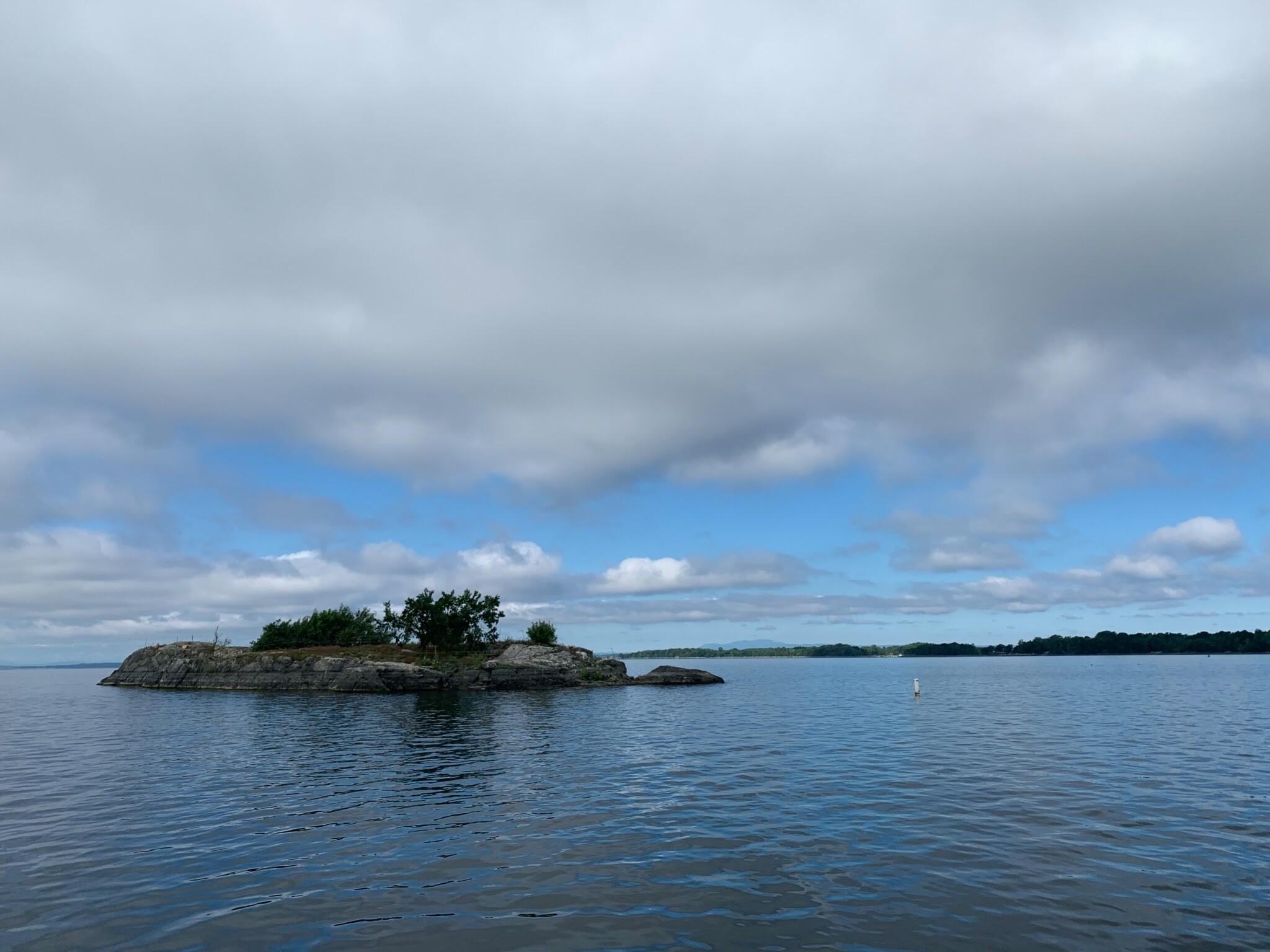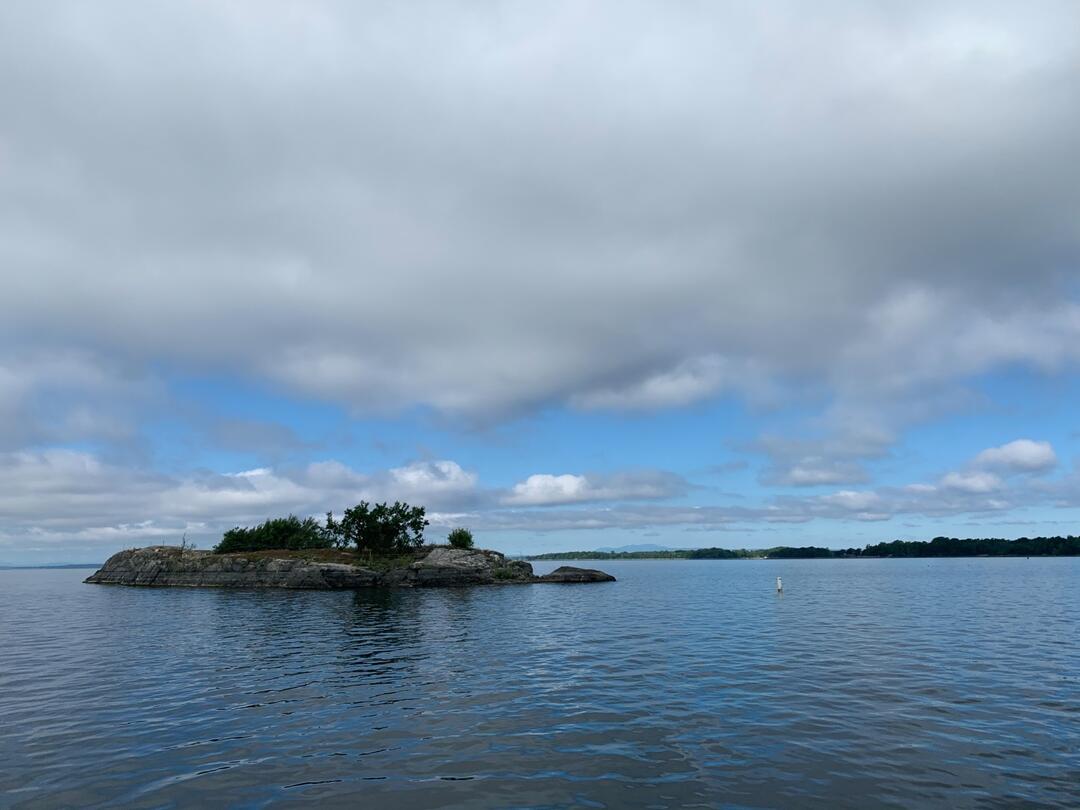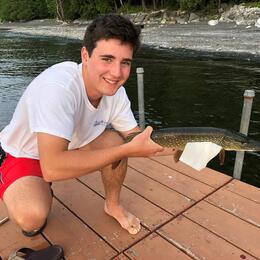There isn’t much going on in North Hero, Vermont. Farms, houses on Lake Champlain, and a couple of stores and restaurants make up the main indicators of human activity in the town. Out on the water though, there is much more action.
Poppasquash Island rests in the inland sea of Lake Champlain, about two and a half miles east off the shores of North Hero. Poppasquash is special because, along with Rock Island in Saint Albans Bay, Common Terns are found nesting there. Common Terns are an endangered species in Vermont, and conservation biologists have been working since the 1980's to protect and help bolster the tern population on Lake Champlain.
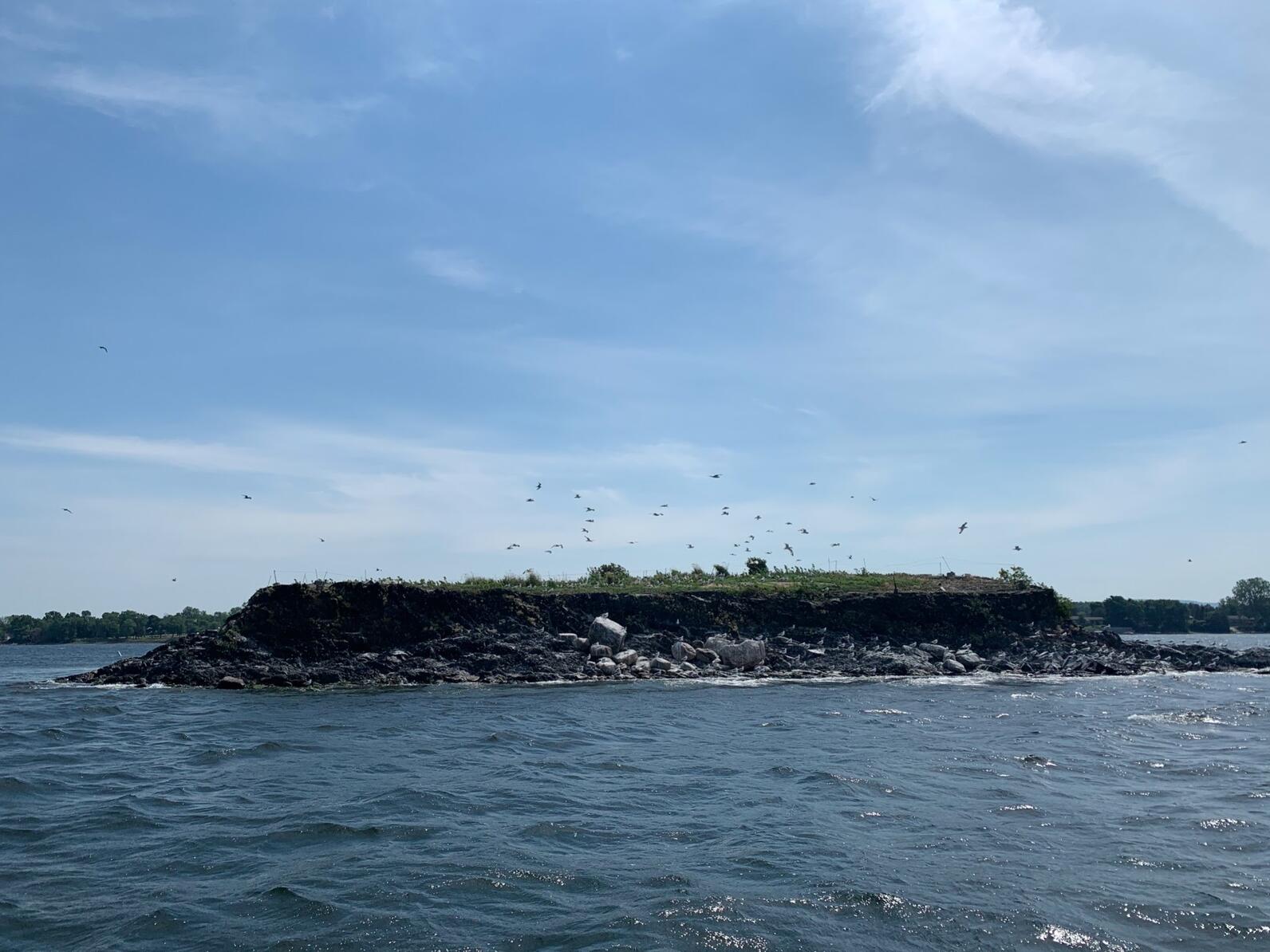
Part of our job this summer was to make regular trips out to Poppasquash and Rock Islands, and monitor the progress of the breeding Common Terns. Each day started with Conservation Biologist Mark LaBarr, my co-intern Fiona McCarthy, and I heading up to North Hero to pick up the Audubon Vermont boat, gas it up, and then launch it.
We head out to Poppasquash Island first, and as we approach, Mark takes some quick notes while we float around the island. The arrival time and details about the weather are recorded, as well as quick observations about the behavior of the birds on the island. On Poppasquash, Common Terns share the land with breeding Ring-Billed Gulls. The gulls populate the center of the island while the terns stay on the outside corners and edges.
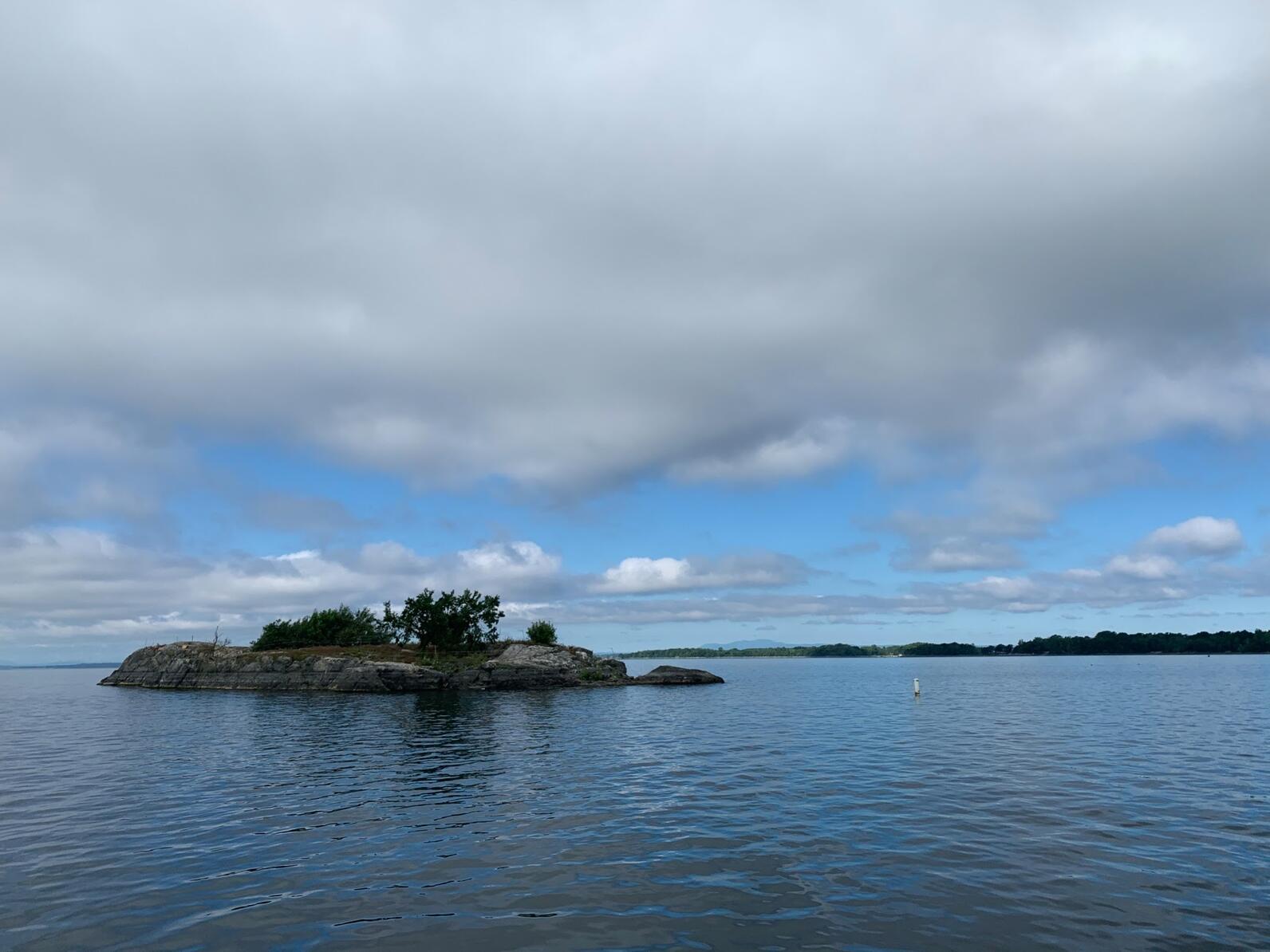
After the observations are made, we land on the island and take a closer look at the terns. The island is usually incredibly noisy and chaotic, and it’s not uncommon to be greeted by flying poop or a dive-bomb from a tern or gull. Throughout the summer, our goals change as time passes. Early in the season, we go with the intention of marking nests. Either Fiona or I record on the data sheet as we walk around and give each nest we see a number and write down how many eggs are in each one. This year, we mark between 30 to 60 nests in each of the three zones of Poppasquash Island where the terns nest. Each nest usually has 1 to 3 eggs. On Rock Island as a whole, we mark between 60 and 70 nests. These numbers are good to find on the preliminary visits to the islands, but the true test comes when we return to monitor the success of the new hatchlings.
As the summer progresses, we get to see some new tern chicks. When the chicks hatch, we record what nest they come from, age them based on their size and what their plumage looks like, then put a metal band with a unique number on their foot. They’ll wear their band anklet for life, and it will give them an identity so we can tell in the future if the same birds are returning to Lake Champlain to breed.
Catching the chicks is always a hectic time, as Mark, Fiona and I chase these small birds over the loose ground and thick grass in their breeding areas, while making sure their parents are not going to swoop down and smash into our heads. Once they are in our hands, we are pecked and bitten and pooped on until we finally let them free again. It is always exciting coming back to the islands every week and seeing the changes in size and appearance of the young birds.
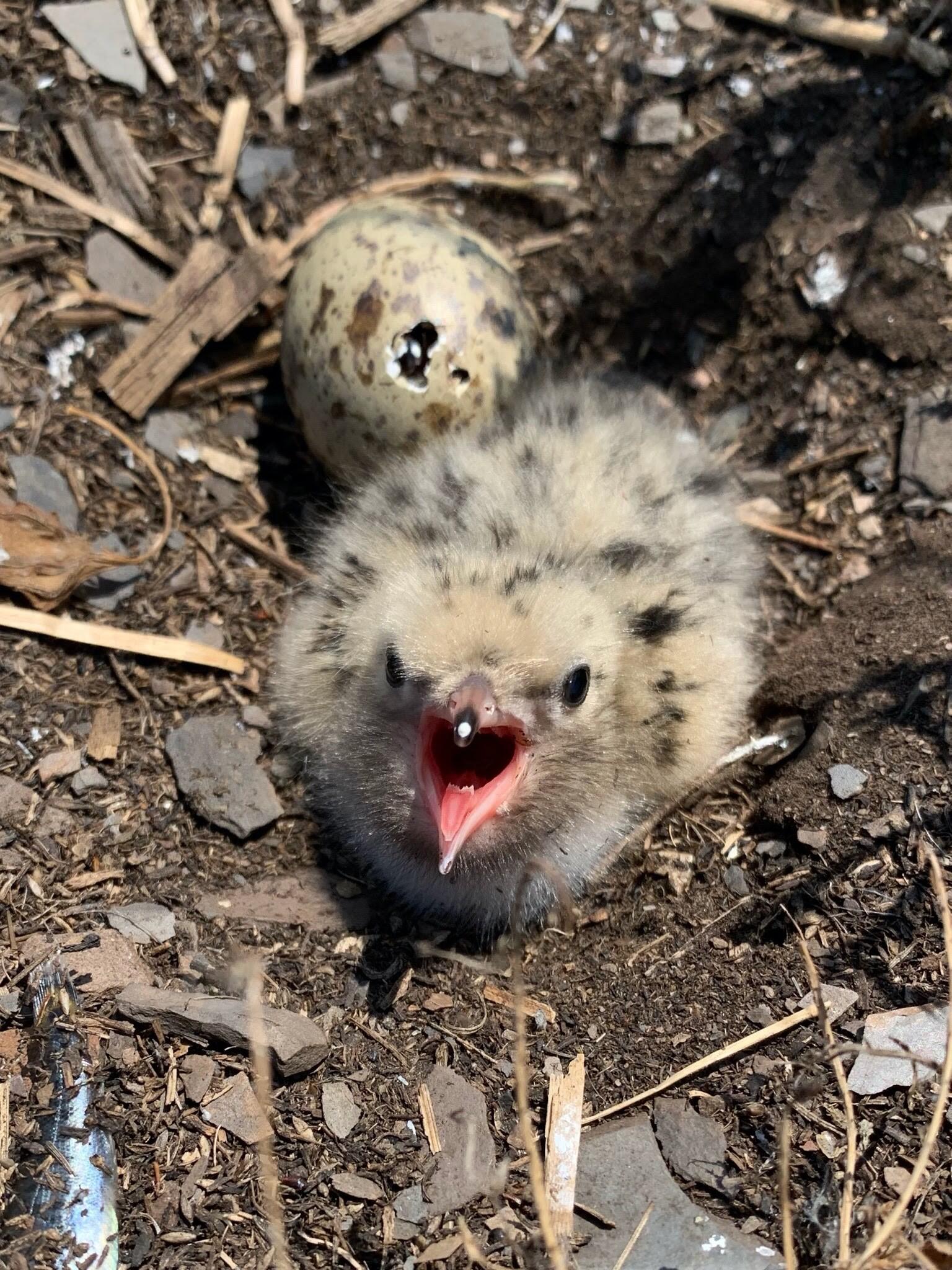
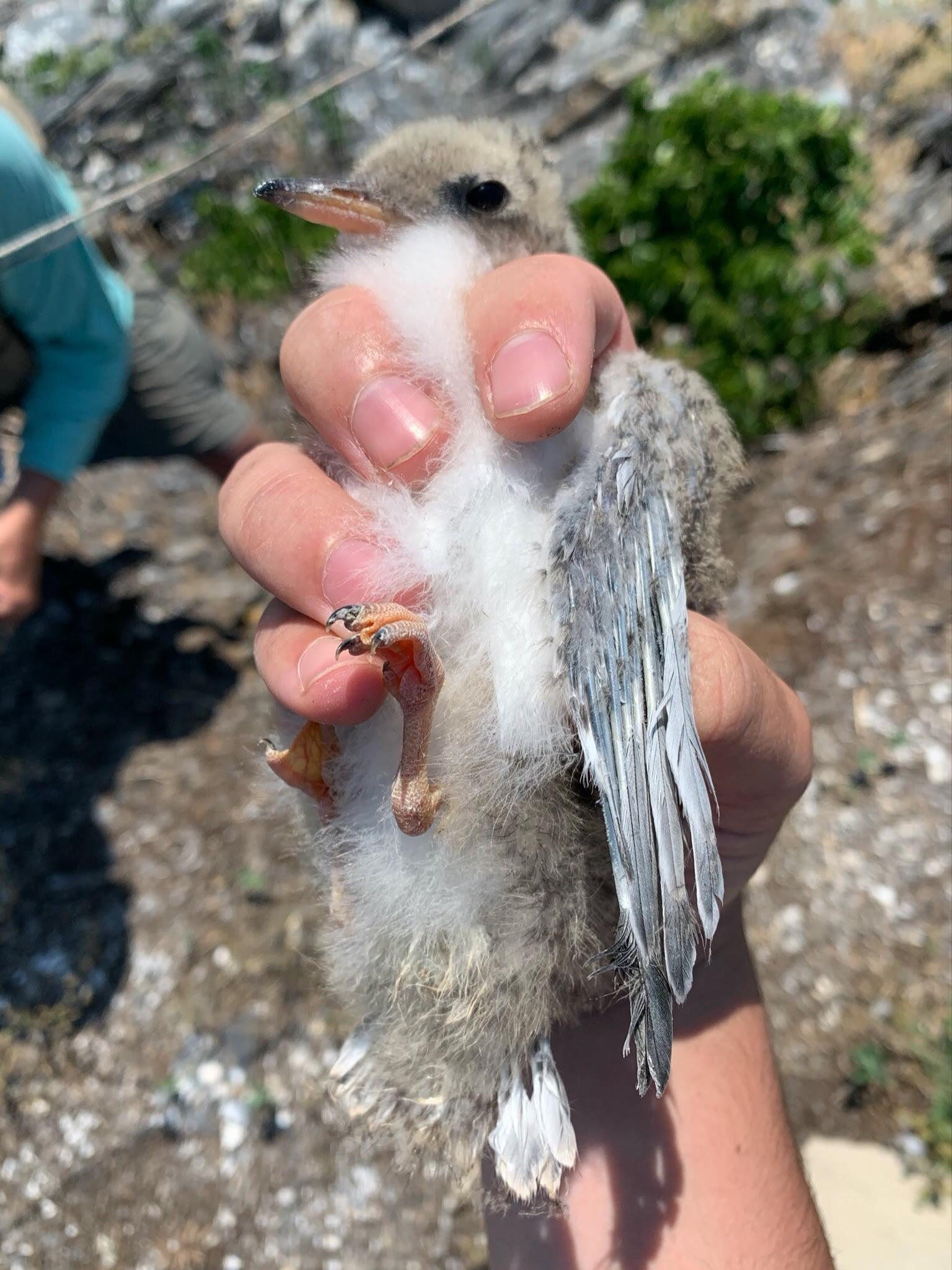
This year though was somewhat different from other years. When it was all said and done, a lot fewer chicks were hatched and set off the islands than in the past. We found many nests that had been abandoned, and there was lots of evidence of predation early in the season. The terns are commonly sought after by Peregrine Falcons, Black-crowned Night Herons, and owls. This year the predators had their way. The scene was similar on both Poppasquash and Rock Islands, with very few successful nests. We even found evidence of a mink that had made its way to the island and made a meal out of tern chicks. Overall, 26 tern chicks successfully made it off the islands. As Mark lamented to Fi and me, this was not a good year for the terns.
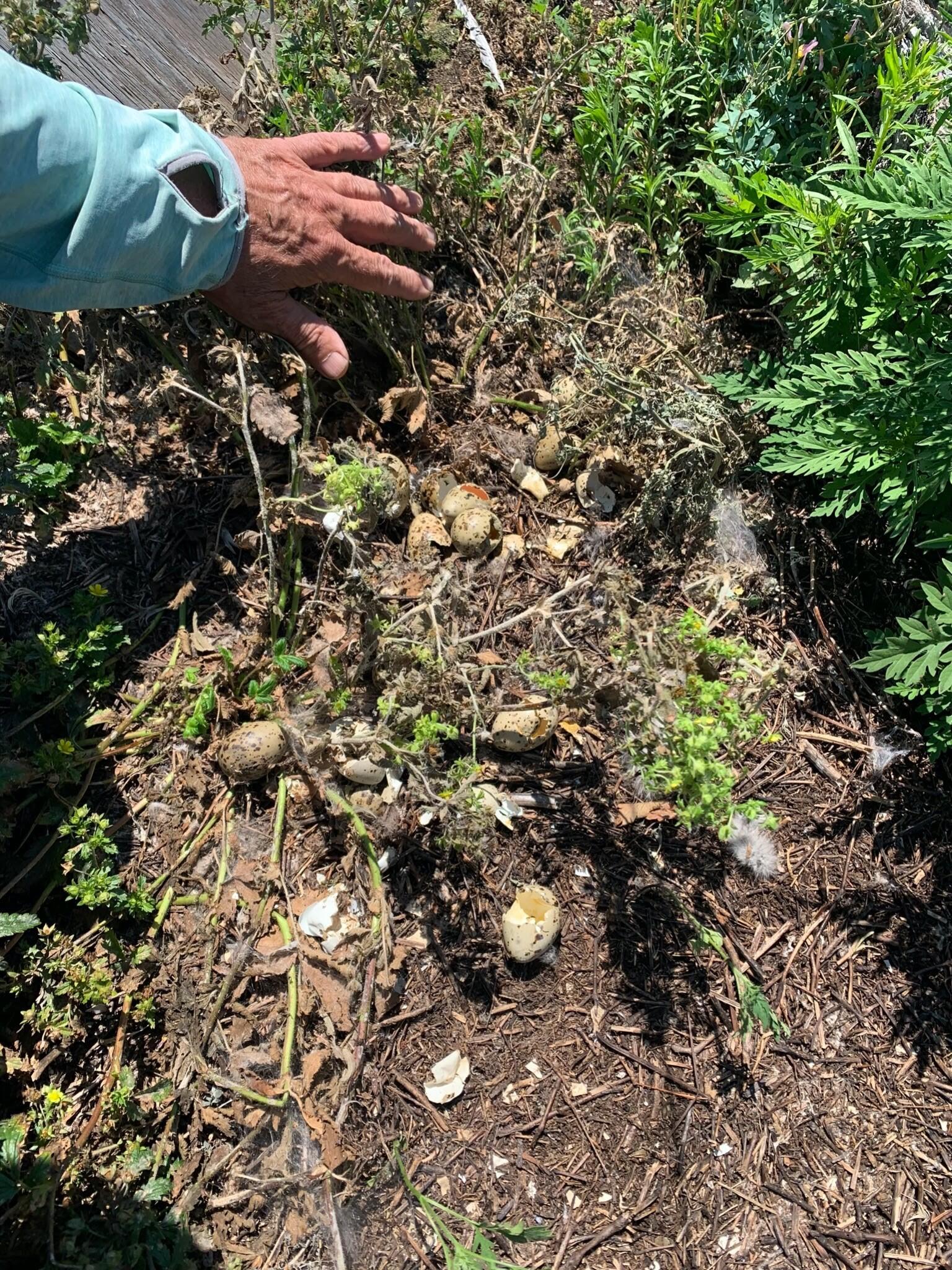
However, one bad year will certainly not be the end for the Common Tern. I had the chance to make a couple trips to the tern islands with Mark last summer, and it was a completely different story. There were so many chicks we didn’t even know what to do. Catching the speedy little birds was a wild rodeo, and last summer turned out to be one of the most successful years ever for the terns. The amount of successfully fledged chicks will fluctuate, and despite this summer being subpar, the terns are trending in the right direction, which is fantastic news.
